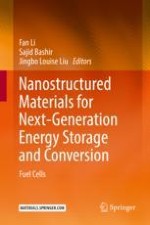2018 | OriginalPaper | Buchkapitel
16. Stress Distribution in PEM Fuel Cells: Traditional Materials and New Trends
verfasst von : Javier de la Cruz, Tatiana Romero, Ulises Cano
Erschienen in: Nanostructured Materials for Next-Generation Energy Storage and Conversion
Verlag: Springer Berlin Heidelberg
Aktivieren Sie unsere intelligente Suche, um passende Fachinhalte oder Patente zu finden.
Wählen Sie Textabschnitte aus um mit Künstlicher Intelligenz passenden Patente zu finden. powered by
Markieren Sie Textabschnitte, um KI-gestützt weitere passende Inhalte zu finden. powered by
